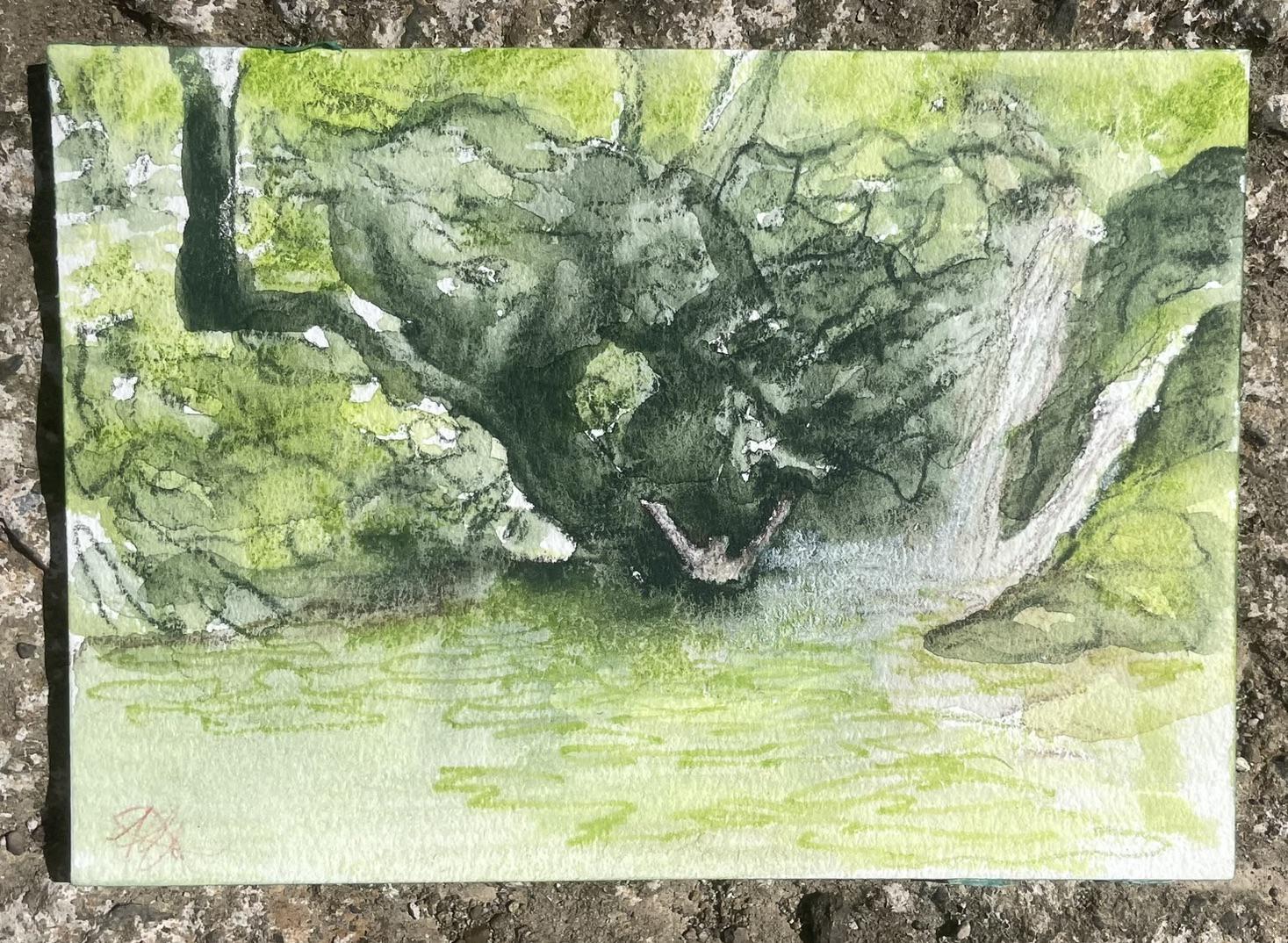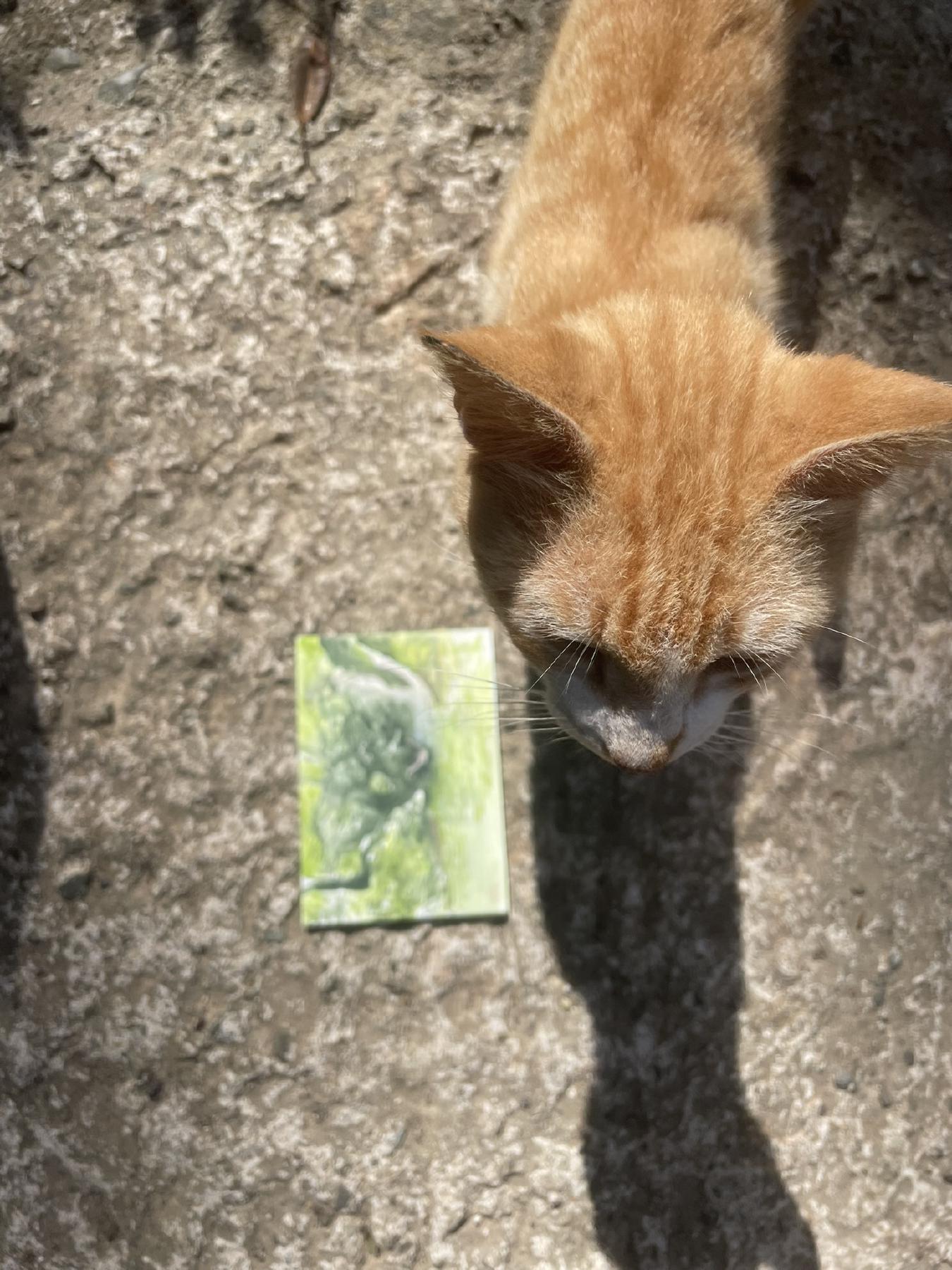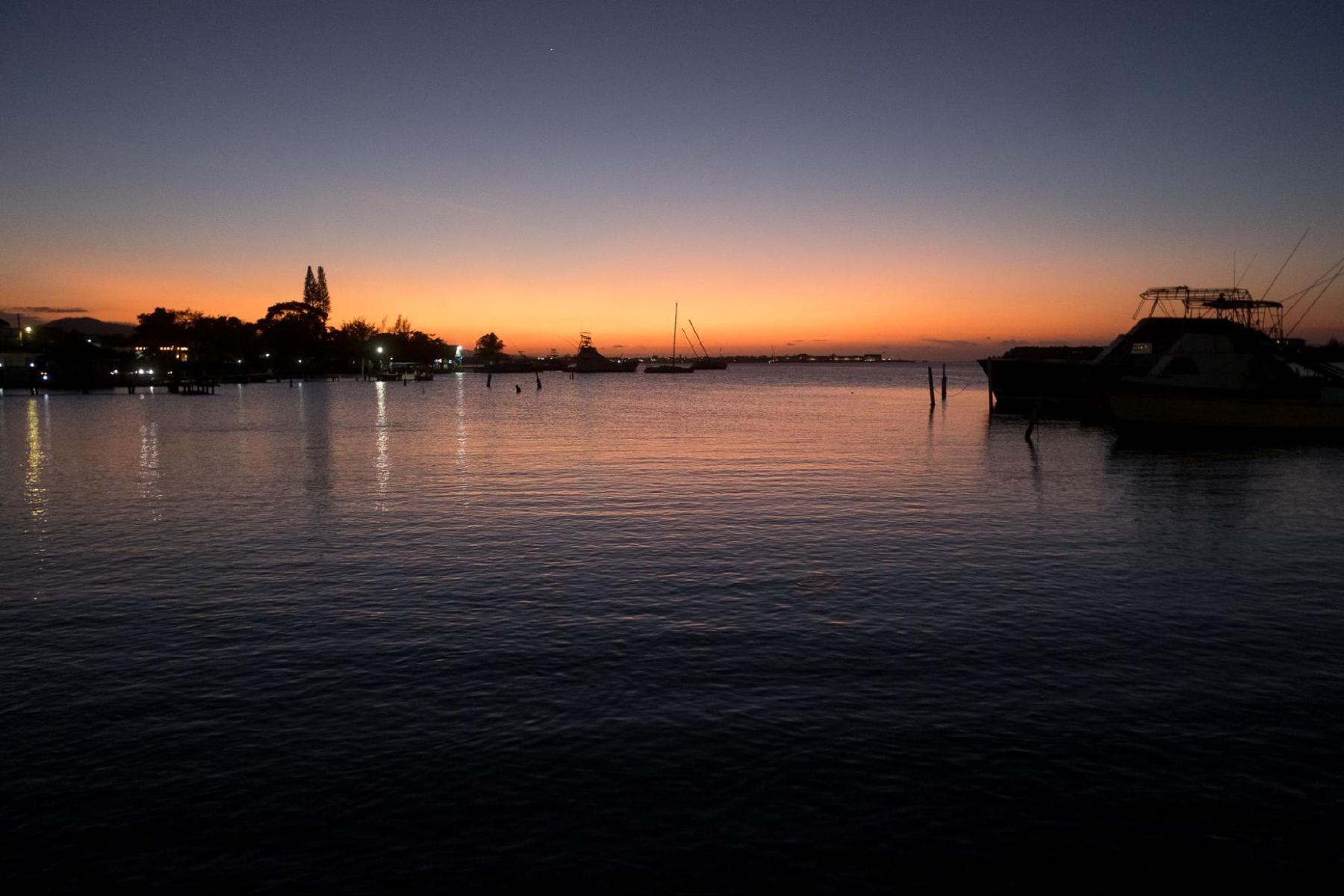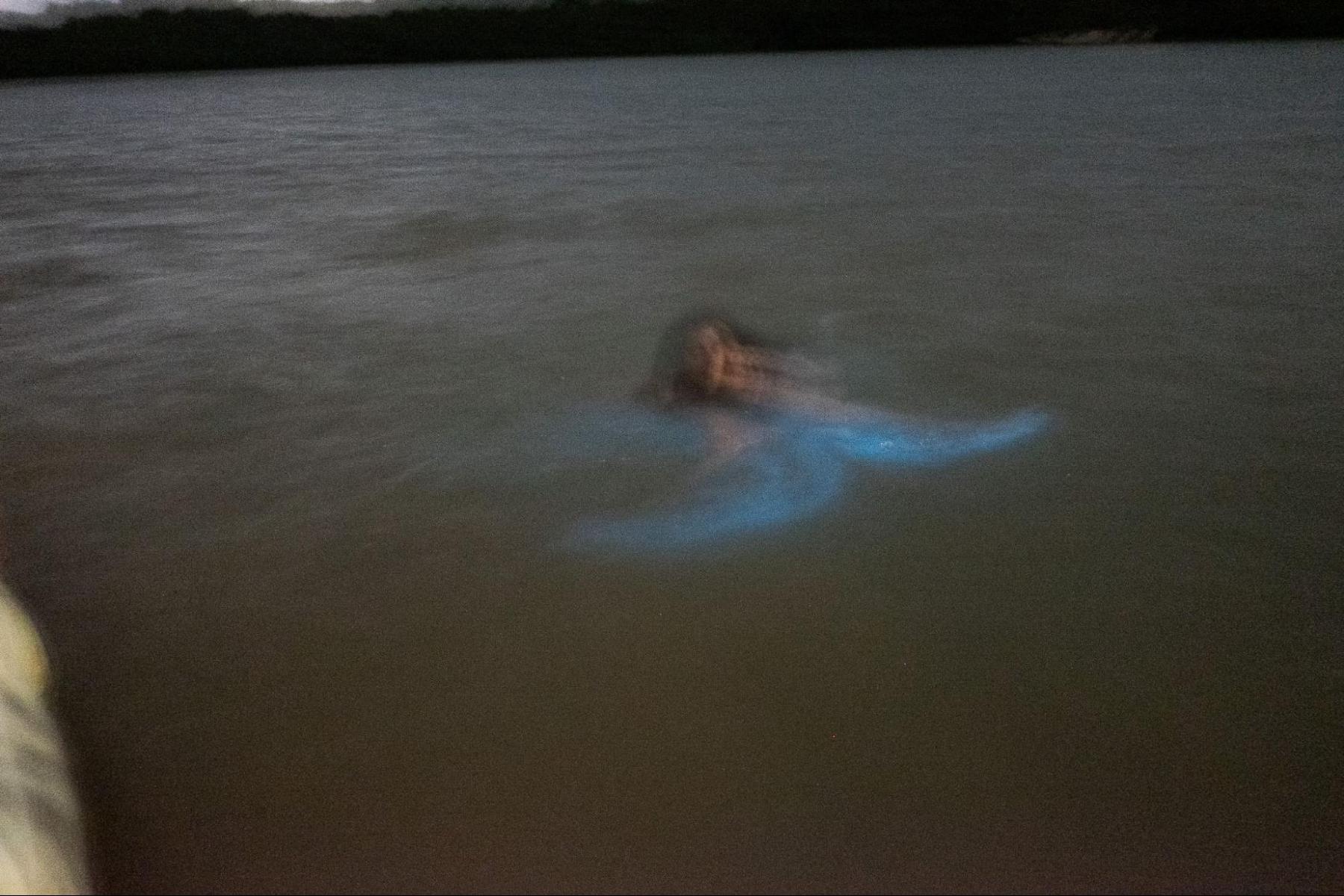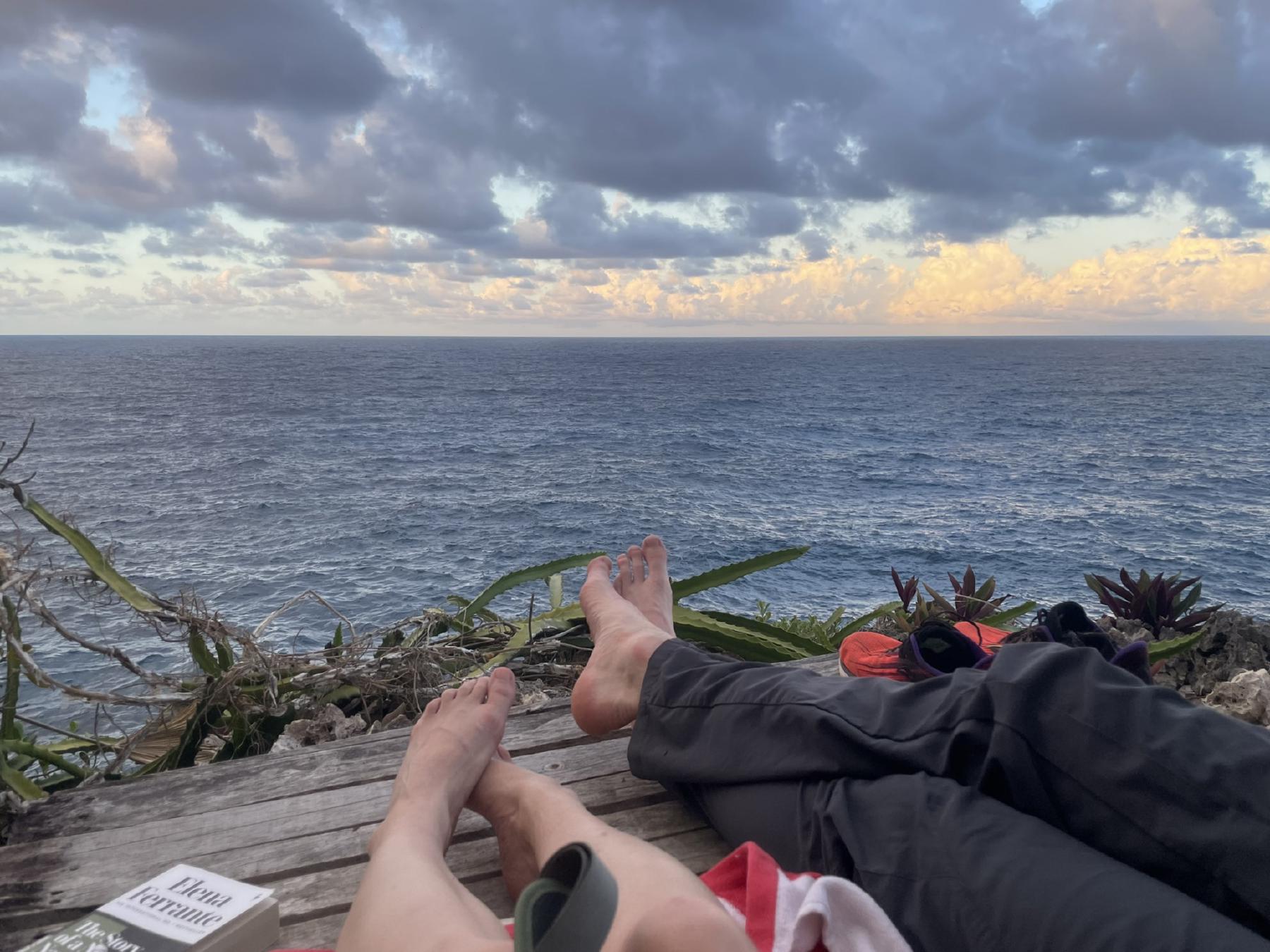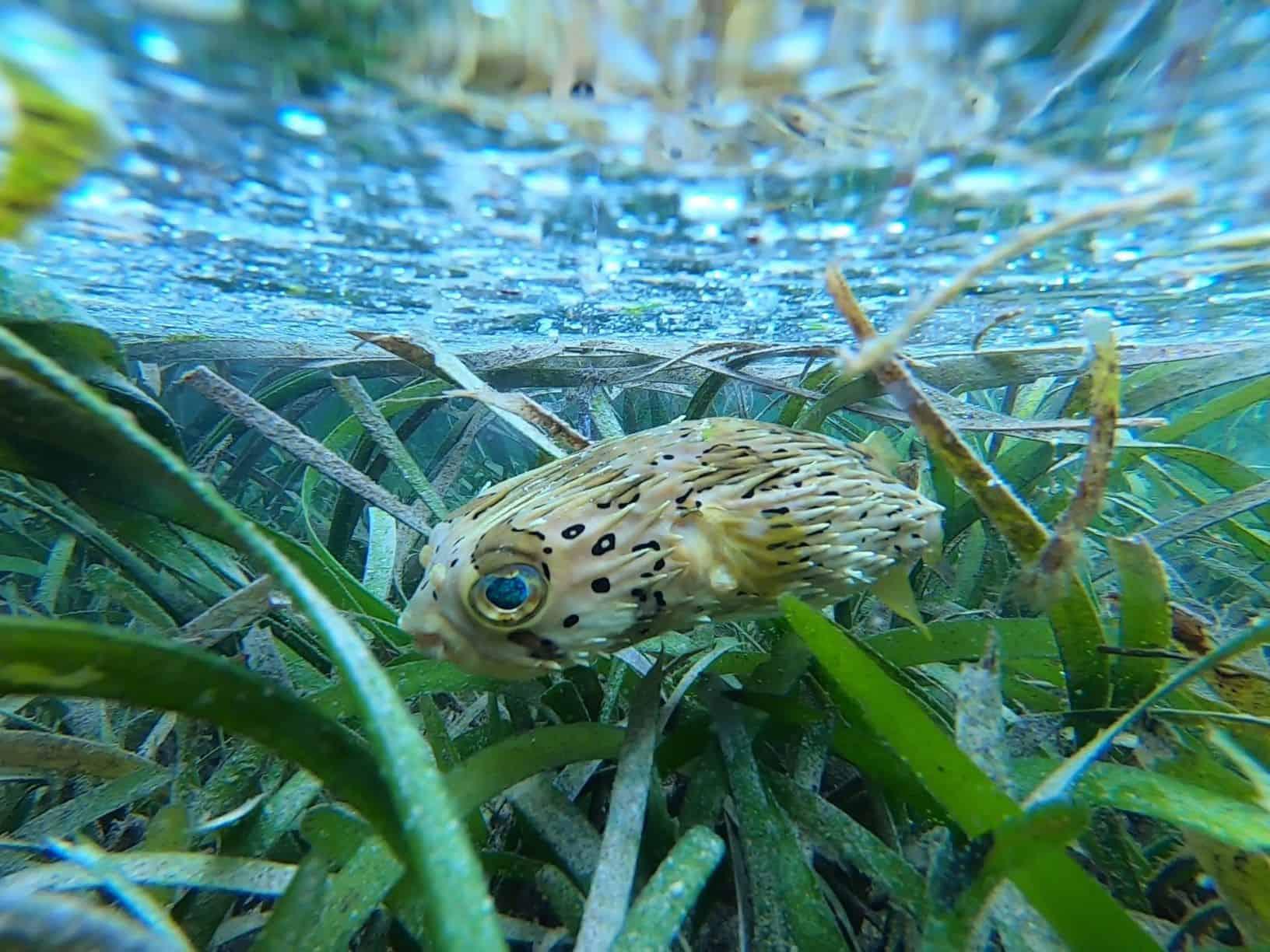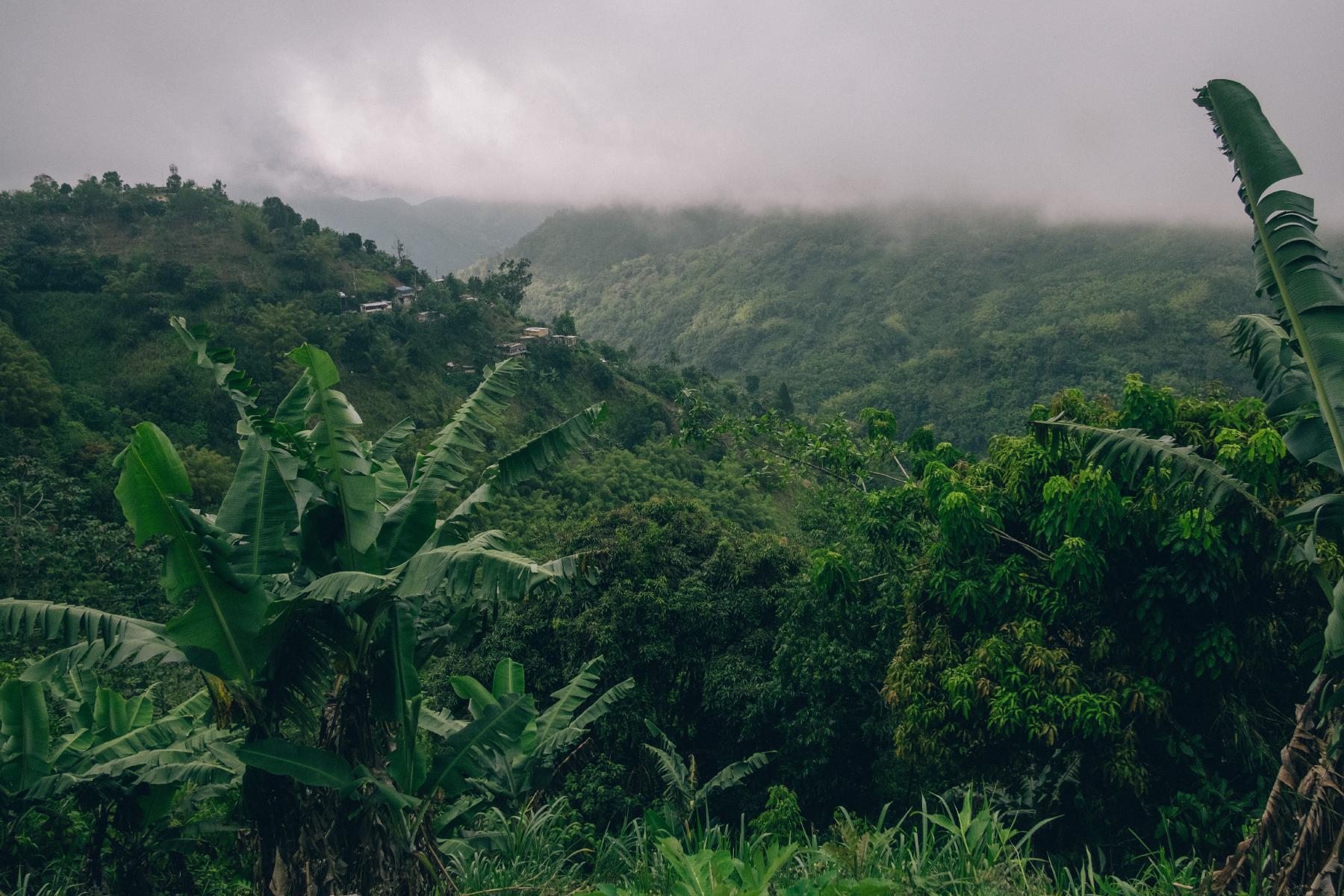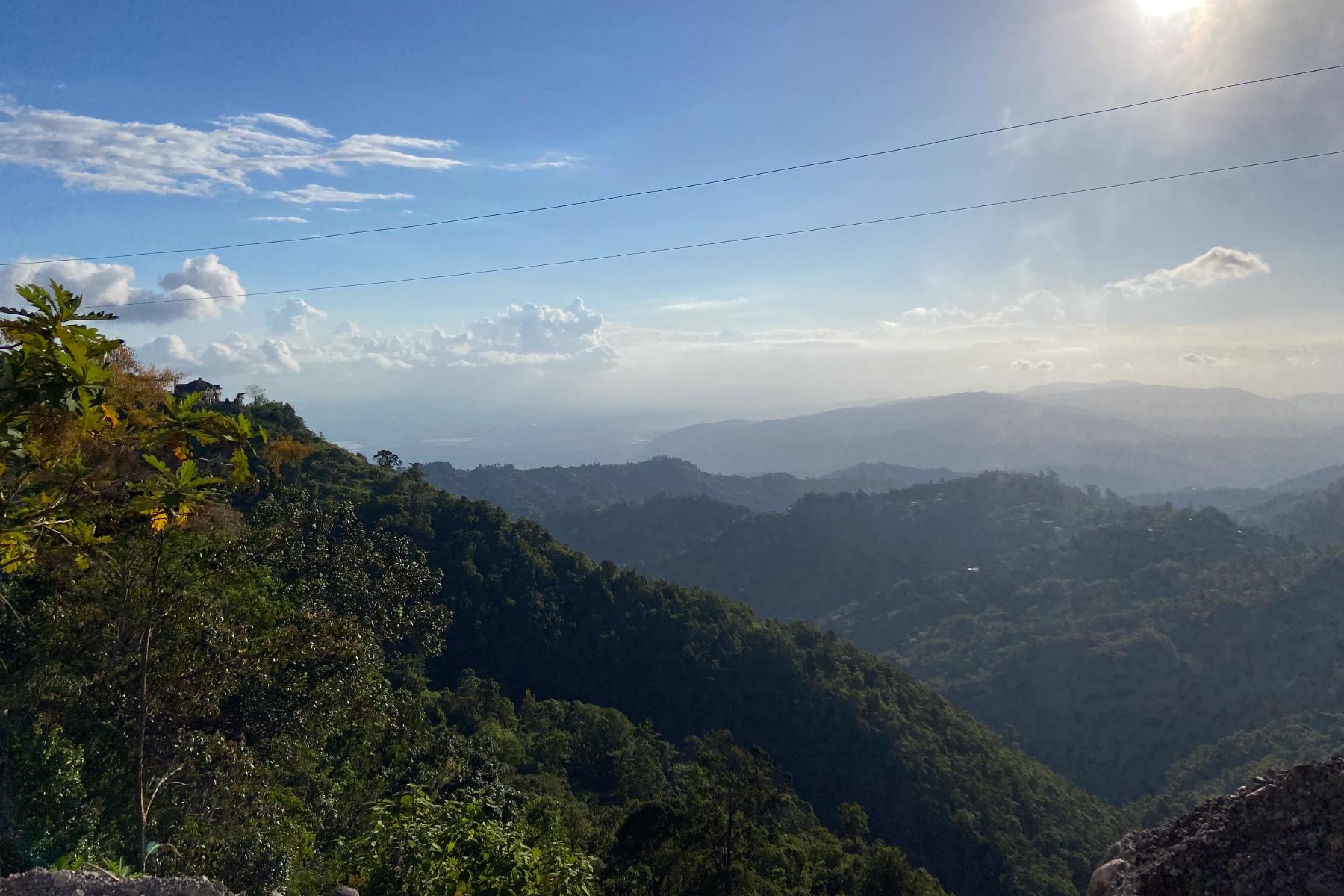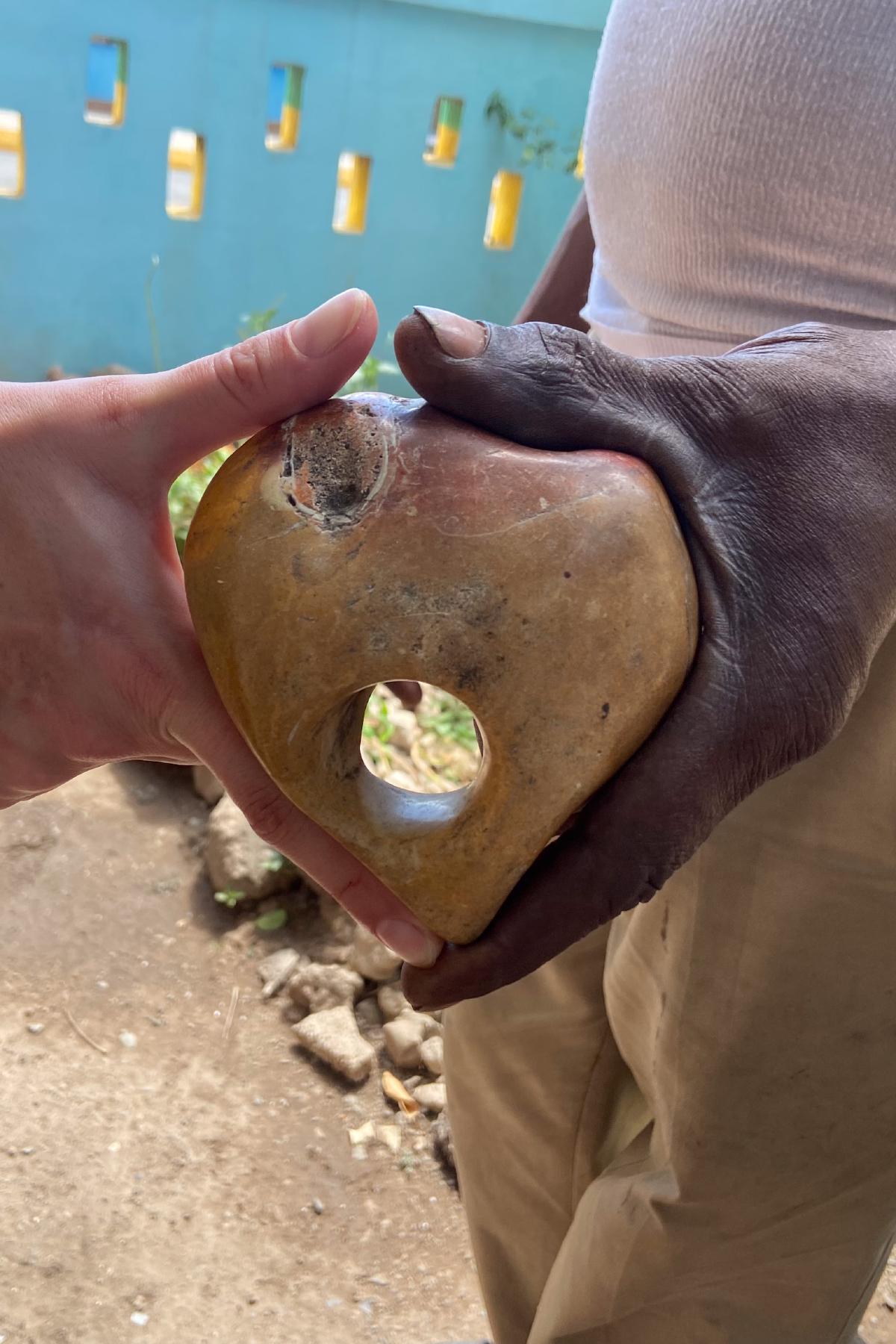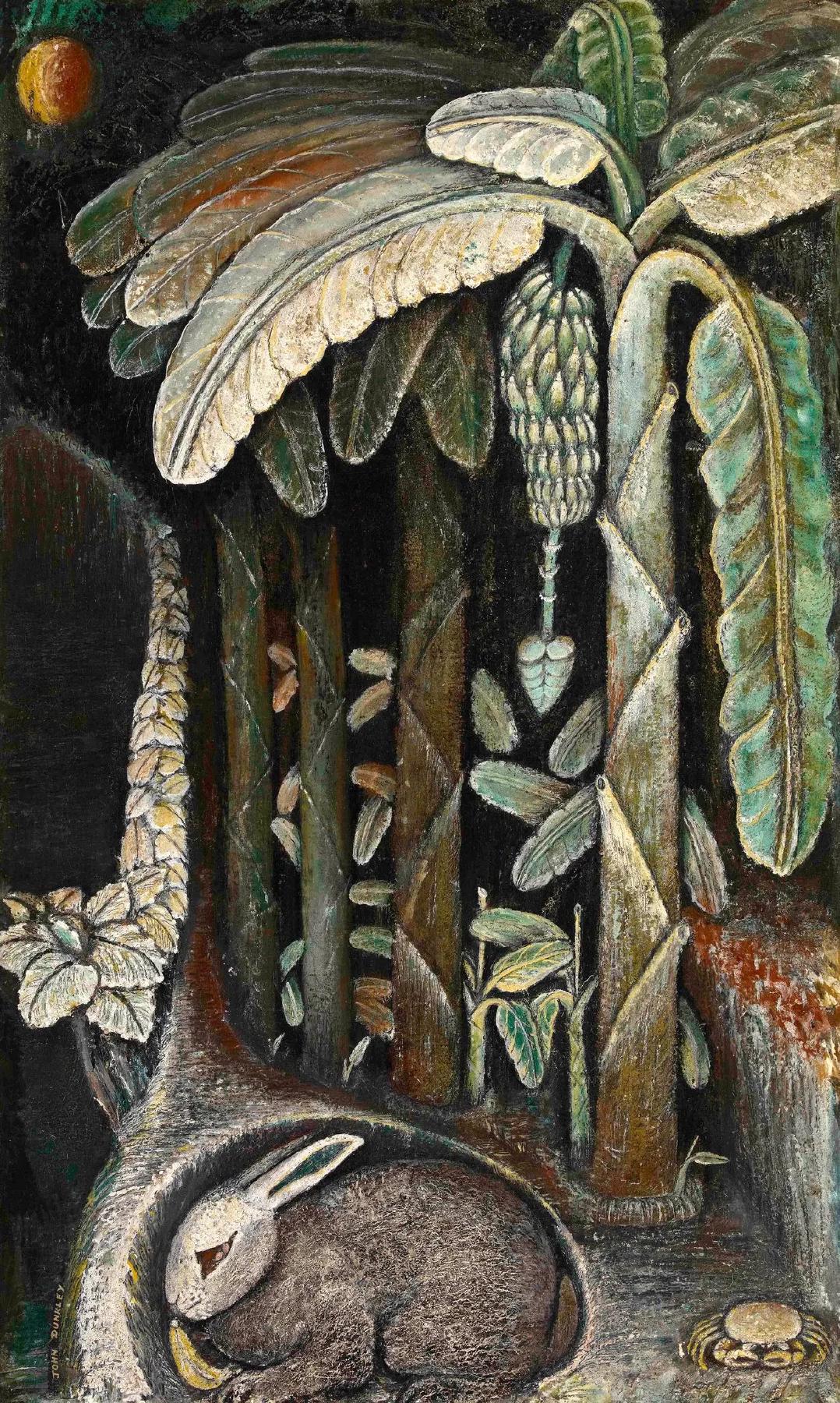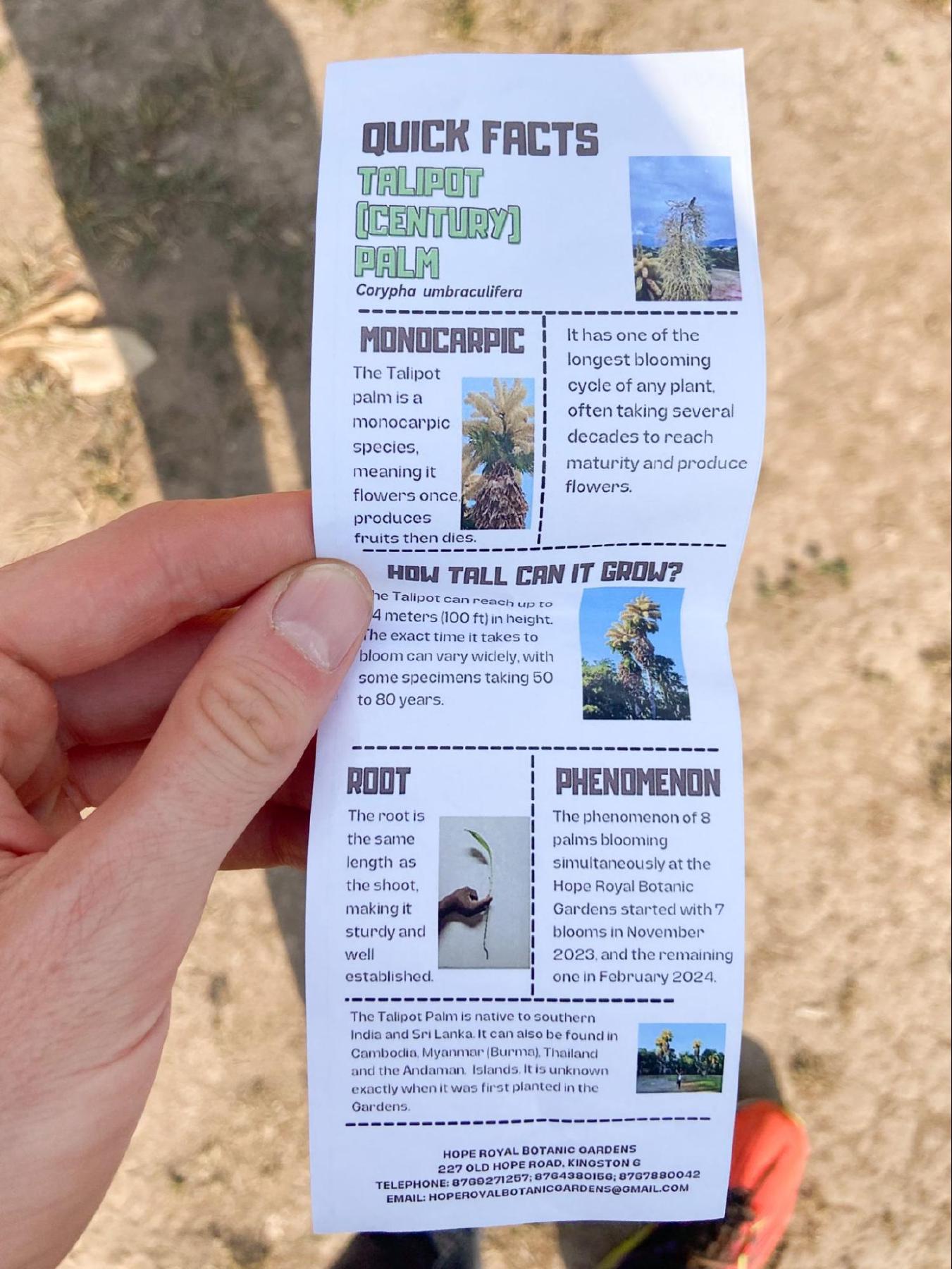Trip Report: Jamaica Birdwatching, Music, and Hiking
Written to share some sights and sounds in the hopes that this is useful to other nature lovers planning independent travel to Jamaica outside the resort-industrial-complex. We found it rather difficult to find up-to-date information to plan our trip, and there is quite a bit of fear-mongering on the internet. We had a wonderful time exploring with our own rental car, hiking, birdwatching, and meeting people in Jamaica, and would highly recommend a visit to this ecologically diverse and culturally unique country.
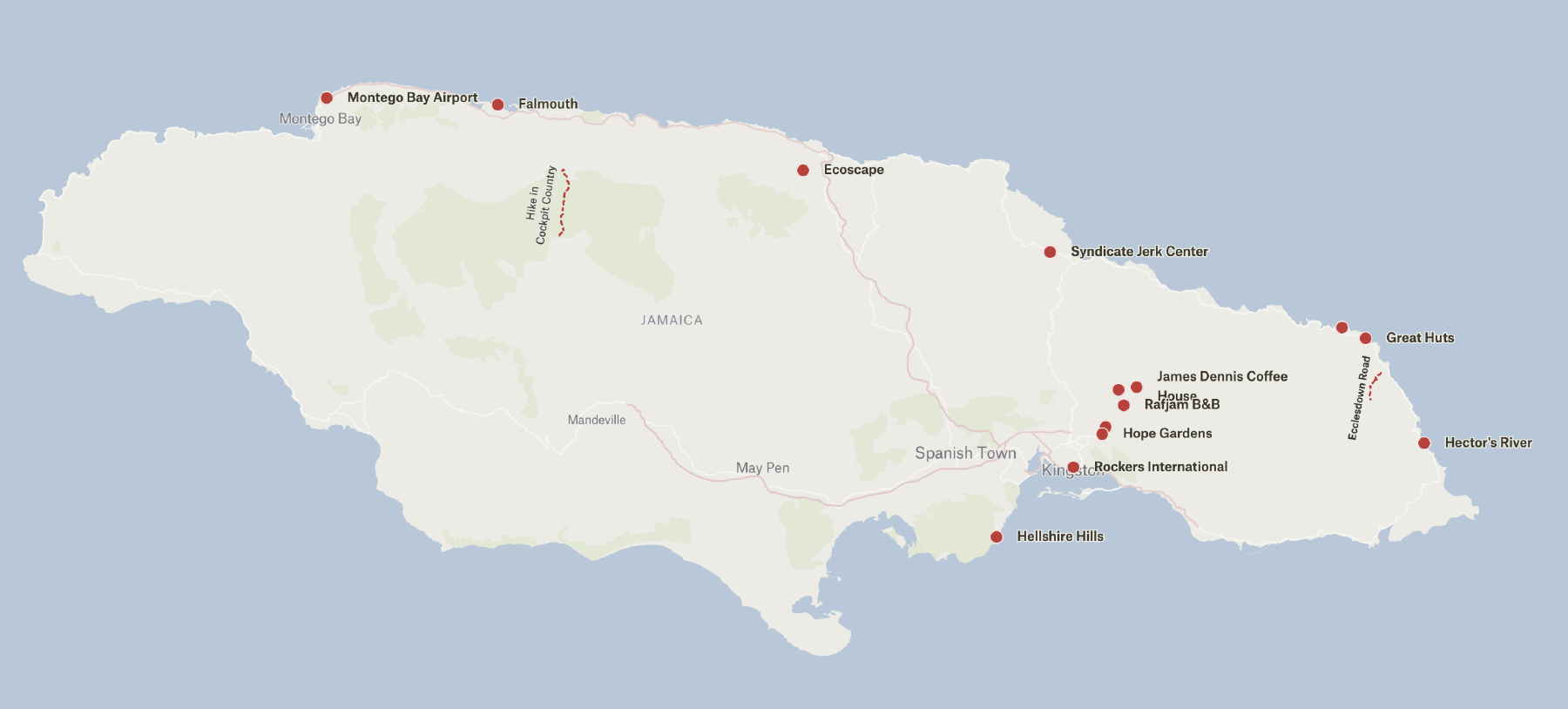
Day 1
We arrived at Montego Bay airport in the mid-afternoon. Immigration was quick, but picking up a rental car (Sixt) was not. We had just enough time to drive to our Airbnb and make a quick stop for groceries before nightfall.
I was apprehensive about renting and driving a car in Jamaica, but it was fine. The main highways between Montego Bay and Kingston are well-maintained. Driving in a right-hand drive vehicle took a little getting used to – and it helped to have Alison letting me know when I was drifting to the left – but it wasn’t that bad. Secondary highways and side roads were uniformly in extremely bad shape. I just allowed plenty of time (+50% over Google Maps estimates) and they weren’t much worse than a poorly maintained BLM road in the desert West. Towns and cities are a little chaotic, but not more so than driving in New York City or Amsterdam – just looking for goats instead of cyclists. But also cyclists.
In the town of St. Ann’s Bay, Google Maps directed us up a one-way street the wrong way, and we laboriously one-eightied in a chaos of helpful taxi drivers at the route taxi center. We learned quickly, as the driver who gave us directions put it, that “Google Maps don’t speak patwah!”
I highly recommend the Airbnb we stayed at, Ecoscape. It’s in a really beautiful valley in the rainforest about a 15 minute drive from the coastal A1 highway. It was sunset becoming dusk as we arrived and the creekside property was filled with the burbling of Jamaican Crows and silhouetted parrots roosting on the trees.
Soundtrack:
Places:
Sixt, car rental, ★★★
Ecoscape, hotel, ★★★★★
Day 2
We woke up at sunrise for the dawn chorus, which was exuberant. There’s always a learning curve to birding in a new place, and this was no exception. The Jamaican woodpeckers in particular taunted us. Also, due to a lack of data, Merlin’s Sound ID does not work very well for Jamaican species, many of which are endemic or have a limited Caribbean range.
Still, we sighted five endemics before breakfast. Active Orangequits, a colorful Jamaican Oriole, many many Robin-like White-chinned Thrushes, Yellow-billed parrots commuting from tree-top to tree-top, and a Red-billed streamertail in the garden. This beautiful hummingbird is one of the two birds national of Jamaica. Besides the endemics, we also spotted a handful of warblers foraging high in palm fruits amongst the Bananaquits, including American Redstart, Black-throated Blue Warbler, Magnolia Warbler, and Black-and-white Warbler.
The wonderful property caretaker, Nick, arrived later in the morning with fresh coconuts and took us on a walk around the local community, pointing out edible trees such as ackee on the way. At one point two tiny Green-rumped Parrotlets flew across our path — tiny green parrots, escaped non-native pets, and very controversial. We ended with a lazy afternoon at a local swimming hole.
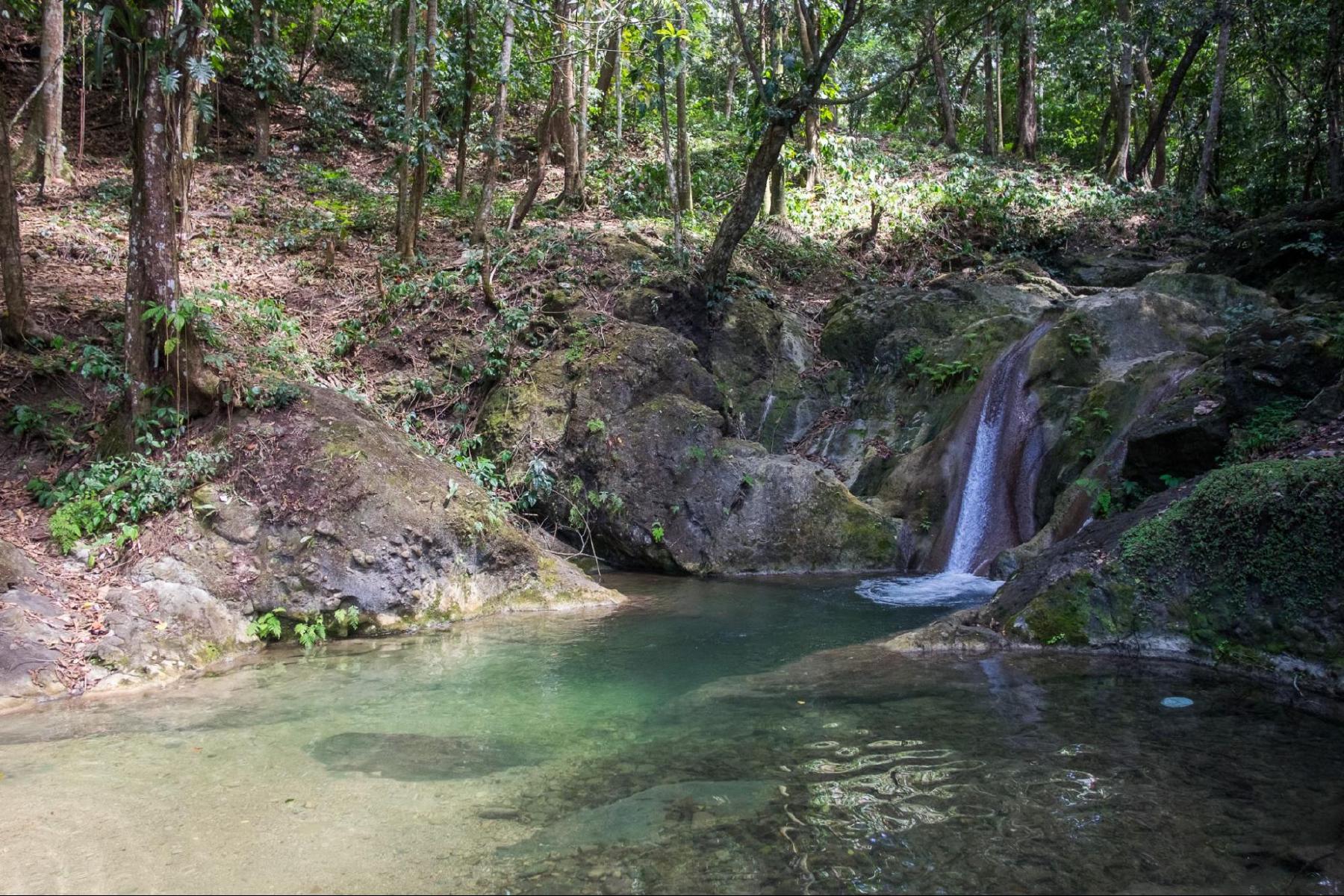
I have a running “joke” that bioluminescent algae don’t exist, and that it’s just the whitewater reflecting the moon. So it was necessary to visit the “Luminous Lagoon” by Falmouth, where a shallow bay has a very large population of Pyrodinium, a local bioluminescent dinoflagellate.
It was predictably touristy, but still fun. Instead of watching the rather sad “dance show,” we just focused on the Magnificent Frigatebirds and Brown Pelicans (in full breeding plumage) flying around the lagoon amongst the roosting Yellow-crowned Night Herons and Cattle Egrets.
And after nightfall, it’s hard to ruin the dinoflagellates (which I’m sorry to report do exist.) Swimming in it and experiencing the glow as the immediate reaction of the water to your own movements significantly enhanced the experience.
We chose to take a taxi, as I wasn’t sure about driving at night. I think it would have been fine though, the A1 highway along the north coast is in good condition. Famous, our driver, had a nice “crash course in 2024 dancehall” Spotify playlist.
Soundtrack:
Places:
Ecoscape, hotel/birding/hiking, ★★★★★
Luminous Lagoon, dinoflagellate tours, ★★★
Day 3
Rain in the morning dampened the chorus but we still got up early and made some nice endemic sightings: Loggerhead Kingbirds on a powerline, Jamaican Becard, with a male and a female flying in and out of their amazing hanging nest, Jamaican Vireo, the curious and creepy Jamaican Lizard-Cuckoo, and Jamaican Spindalis. The mournful song of the Rufous-throated Solitaire kept us company. We never saw this reclusive thrush, though we heard it more around this Airbnb than anywhere else on the trip.
That afternoon we drove to Portland, on the east side of the island, where we stayed at Great Huts Resort in Boston Bay. The road gets substantially slower after Ochos Rios. Along the drive we stopped at Syndicate Jerk Center, which was phenomenal – best jerk chicken of the trip.
Great Huts was quirky and beautiful but not perfect – a way to lock the room would have been nice. We stayed in the Sea Grape, which is worth it for the view and privacy.
We found lots of Lesser Antillean Rainfrogs while walking around at night.
Places:
Syndicate HQ Jerk Center, food, ★★★★★
Great Huts Resort, hotel, ★★★★
Day 4
While researching birding sites in Jamaica, one place kept coming up — Ecclesdown Road, about 15 km south of Boston Bay. I tried to find a birding guide who would lead a tour but wasn’t able to find someone in the area. So Alison and I woke up before dawn and planned to explore it on our own.
On the way though, we made a detour to the town of Hector’s River, where a colony of White-tailed tropicbirds roosts on the headland.
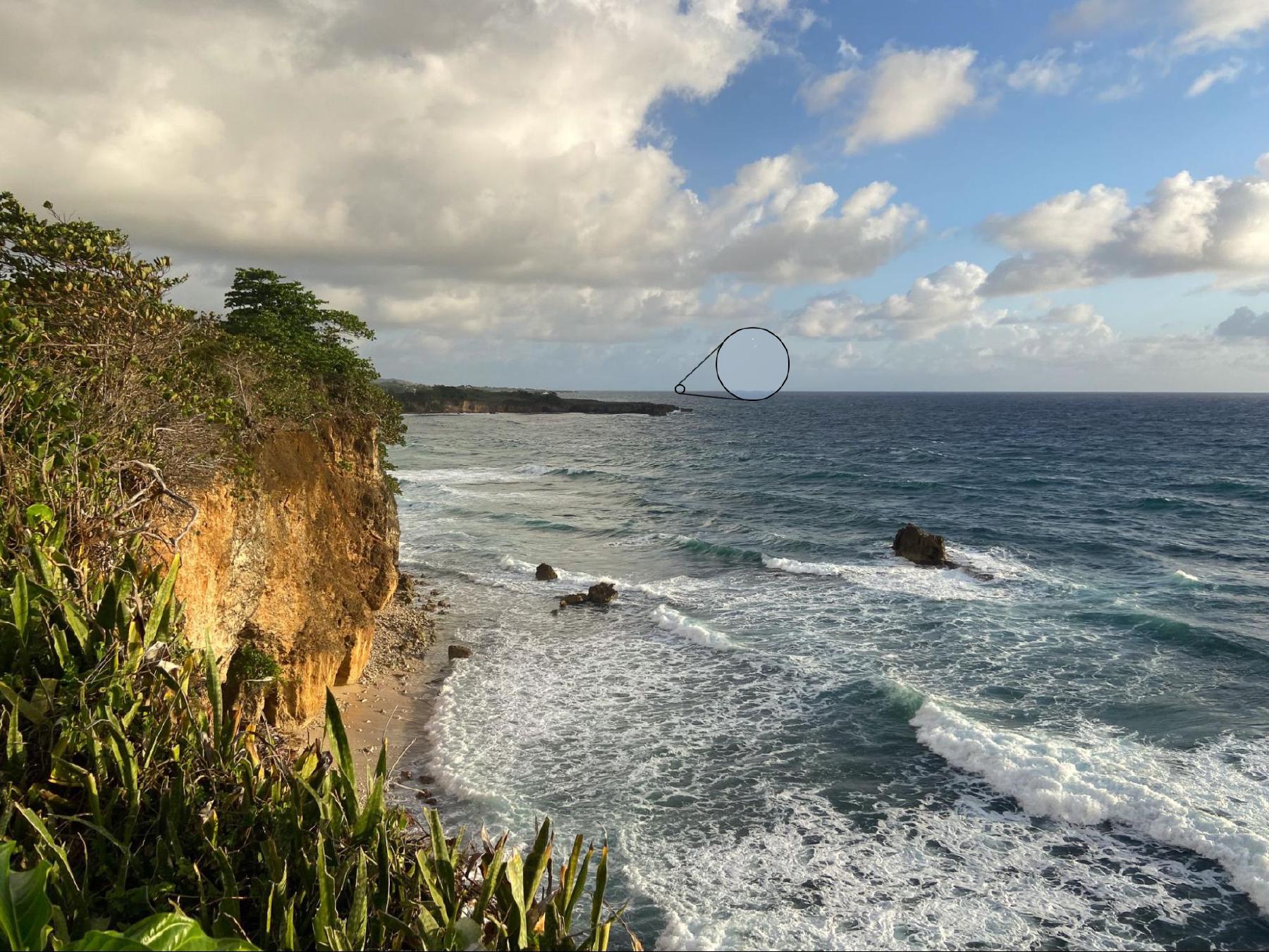
We drove slowly along Ecclesdown Road, stopping after about 2 km to get out and walk around and bird. We quickly had a nice view of a Jamaican tody (delightfully, known locally as “Robin Redbreast”), which have a habit of vocalizing before jumping out to the road on a highly visible branch and curiously looking about.
We continued to drive a kilometer or so down the road, stop, get out and bird for a while, passing a few locals headed up into the banana plantations to work.
Another thing that kept coming up in my pre-travel research was crime. Violent crime rates are very high, and Jamaica has the highest nationwide (reported) homicide rate in the world. Of course, this involves political gangs and not tourists, and I wasn’t that worried about it. But the possibility of opportunistic violence and limited police capacity was enough to prompt the United States to issue a “Level 3” travel advisory to “reconsider” any travel to the island.
I once went backpacking with a friend who likes to observe the permit registration attitudes of various land authorities. A National Park Service ranger might want a detailed itinerary of where you plan to camp each night. Before setting out for a nature walk from the visitor’s center, they will ensure you are carrying 2 liters of water per person. On the other hand, at a US Forest Service station, you can ask the ranger for a permit to hike up the north side of Hell-for-Sure pass, descend via Crumbly Ravine, and camp at Bear Lake, and the ranger will say “here’s your permit, have fun.”
The United States is like the NPS. Other countries, including Canada and the Netherlands, do not share the same concern about Jamaica. And in general we didn’t encounter anything that made us feel unsafe – but that didn’t mean that other people weren’t concerned about us.
After seeing the same person hiking up Ecclesdown Road with a machete to cut bananas a couple times, first to meet him, and then to talk about some of the birds we had seen, we were unnerved when the third conversation with him took a turn.
“Look, it’s great that you’re here, but two young people like yourselves, out here alone… you don’t know anyone, please turn around today. Come back later, come back tomorrow, but please find someone from the government, someone local, anyone to come with you.”
“Okay,” we said, “thank you.” It was a bit disconcerting and we weren’t sure what to do next.
When we saw him the fourth time, we offered to hire him for a few hours to walk around with us, to which, after some quick discussion with his colleague hiking up with him, he agreed. Some people I’ve told this story to think that he was trying to get us to do this all along, but I’m not sure – he seemed quite surprised and uncertain about it.
We proceeded to have a pleasant couple hours birding together in the mid-morning. Ecclesdown Road is indeed a great place, with lots of open views on one side, and varied forests throughout. We saw Black-Billed Streamertail (the other one of the two national birds, which were a single species until recently), Jamaican Vireo amongst dense vegetation, the beautiful Jamaican Spindalis, Jamaican Euphonia, and lots of parrots, though unfortunately not with a good enough look to distinguish Yellow-billed from the rare Black-billed.
We did a lot of walking around on our own in remote places we didn’t know very well, and it generally felt okay, but to be honest I’m not sure what risks we might not have been observant of.
For lunch we returned to the Boston Jerk Center, where we ate the previous night as well, hoping it would be better at lunch. Unfortunately, it wasn’t.
We spent a relaxing afternoon just down the road at Winnifred Beach. The swell is much better for swimming here than at Boston Bay, and the beach is chill, well looked after, and inexpensive.
In the early evening, we scouted out somewhere else to bird the next morning, since we didn’t feel comfortable going back to Ecclesdown Road by ourselves, and it’s not actually that easy to just find someone from the government to hike around with you. The excellent, though out of date, guide at Birdfinding.info recommended a road behind the San San Police Station, which immediately enters dense rainforest. In the late afternoon heat, the shade of this forest was a relief, and we found Smooth-billed Ani, Rufous-tailed Flycatcher, Greater Antillean Bullfinch, Zenaida Dove and beautiful views of a male Jamaican Oriole.
We ended the evening with a quick stop at Goblin Hill Villas, where staff cheerfully let us bird on the grounds. We didn’t see too much, but had a nice view of a Little Blue Heron foraging on the grassy bluffs. Like most of the places we stayed, the hotel seemed almost empty.
Oxtail and Ital Stew Peas for dinner at the Great Huts restaurant, tasty.
Places:
Hector’s River, birding, ★★★ – special place for White-tailed tropicbird
Ecclesdown Road, birding, ★★★★
Boston Jerk Center, food, ★★ – perhaps worth it for the name
Winnifred Beach, beach, ★★★★
San San police station road, birding, ★★★★★
Goblin Hill Villas, birding, ★★
Great Huts Resort, food, ★★★★
Day 5
We returned to the San San police station road in the morning. Again, this was a wonderful walk, featuring Caribbean Dove, Jamaican Woodpecker, White-eyed and White-chinned Thrush, Worm-eating Warbler and more.

After breakfast (lots of callaloo, like everywhere), I got excited about snorkeling as a possible activity, which wasn’t on my radar before. It’s not that Jamaica is particularly known for its snorkeling or anything, or even that we were near a good spot. It’s more that it was something possible in this place that wasn’t really possible back home. I can walk around and look for birds anywhere! Why am I wasting my time doing that here?
With a little more effort than they had originally described, the hotel is able to provide us with some snorkeling gear for a couple hours, but I’m confused about where to go. Boston Bay, as they had initially improbably suggested, is clearly a bad option, as surf is up. Eventually we drove over to San San Beach, where we had seen an idyllic looking island earlier, and the water seemed shallow and potentially interesting.
Or tried to, at least. On the way there (only a few km from the hotel), a taxi slowed down and allowed me to pass. This was bizarre behavior and the reason soon became clear – a police roadblock up ahead. The police asked us to stop, and we handed over the rental car’s paperwork. Which, as it turns out, had expired days before. The police were ready to issue me a 15,000 JMD (100 USD) fine, as well as a promise to complete loads of paperwork in a foreign bureaucracy and with a rental car company. Luckily, Alison convinced them that it would be a mean thing to do to me on my birthday, since it wasn’t my fault, and we arrived at the beach unfined.
I was apprehensive about snorkeling at first, especially since the water clarity was initially low and there wasn’t much to see but endless seagrass. We were also the only people on the entire beach. But soon we got beyond the shorebreak and saw our first fish — a pufferfish! (Long-spine porcupinefish.) I saw a couple rays but they were very fast swimmers. Not my photo, but this is what it looked like:
Out by the island there were more exciting and colorful fish around the shallow reefs, though not much living coral. The water on the shore of the island was bathtub warm. Watch out for floating vegetation though – Alison brushed up against a piece of manchineel and regretted it.
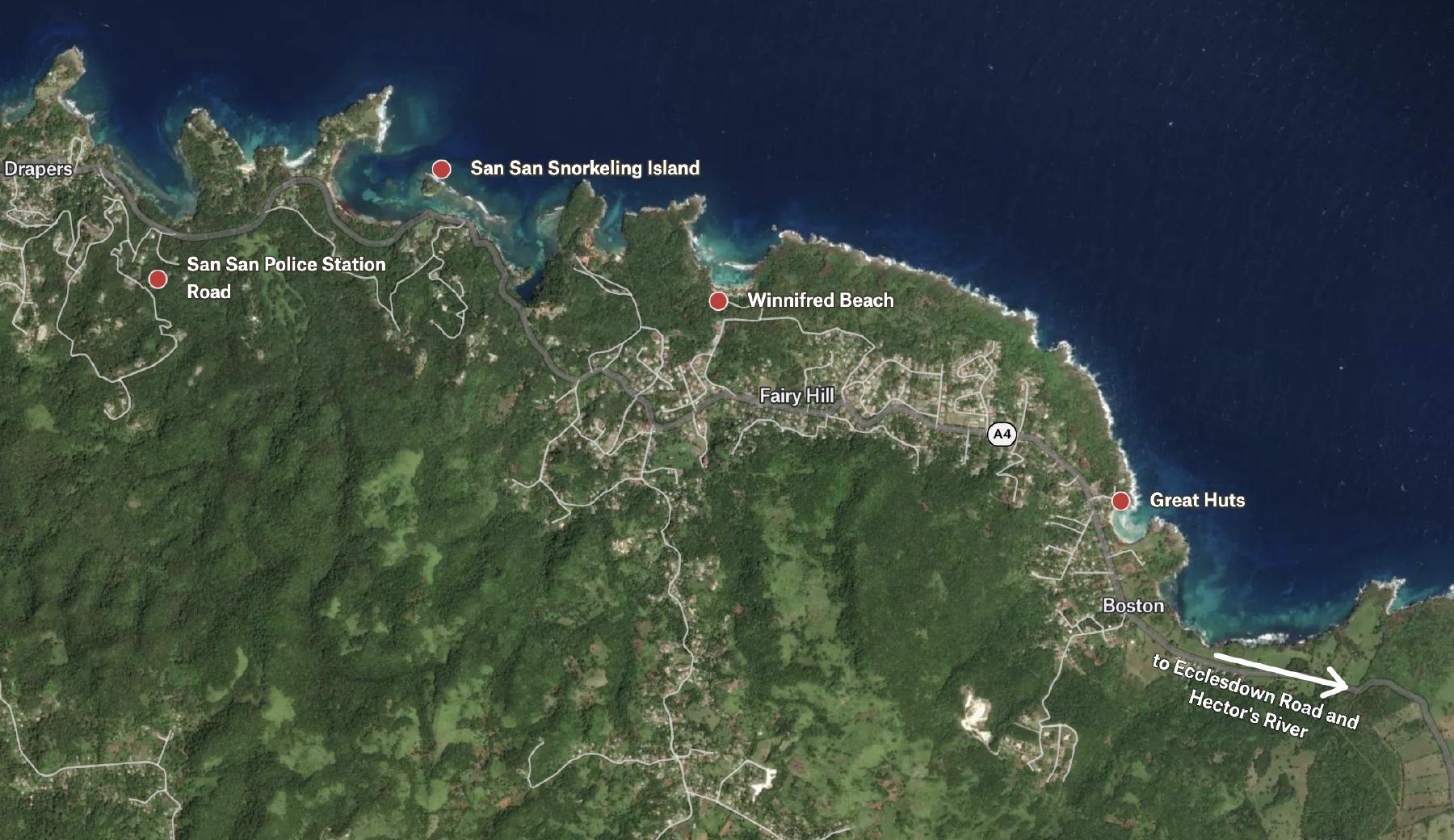
Our next destination was the cloud forest of the Blue Mountains. We backtracked to Buff Bay, and from there it’s a beautiful climb up a river valley into mountains. While not very far, the road is slow and offers plenty of time to appreciate the scenery.
Just as I’m about to ask Alison to check on Google if we already passed “J.D.’s coffee house,” we round the next corner and a man runs into the middle of the road to meet us yelling “COFFEE BREAKKKKKK!”
We have arrived at James Dennis’ Coffee House.
It’s about 4 PM, and we still have at least 30 minutes of driving ahead of us, so we don’t have time for the full coffee experience. My plan was just to ask him if they were around the following day and set up a time to stop by. But Otis immediately offered us coffee, and from the first sip we both slowed down. This was, by a high margin, the best coffee we’d had since arriving in Jamaica (and for some weeks before, having recently switched from swill (Douwe Egberts) to swillier (Jumbo Rood).
The boys were cooking up a chicken curry and they offered us some, so we stayed for some of that too. It was really tasty.
With a decently long drive to our next hotel, Rafjam B&B, so we got moving again around 5 PM. (It starts getting dark around 6.) Along the way we saw several Crested Quail-Doves, aka, mountain witches, perhaps my favorite of all of the endemics. A truly gorgeous pigeon.
There was quite the difference between the two sides of the Blue Mountains.
After quite a bit of vertical descent, we turned onto the road towards the B&B. Google Reviews warned about this road, and at first it wasn’t so bad. A sign on the second or third hairpin said “RAFJAM Don’t worry about the road!”
The rest was a little more hair raising, but perfectly navigable with a low clearance vehicle and careful driving. Upon arriving at the house, a Jamaica Defense Forces truck was parked in the driveway. I pulled our car in behind it, but it almost immediately indicated a need to back up, so we moved into a neighbor’s steep driveway to the left. The truck left and I reverse turned out of the driveway.
Slightly too sharply, as I hit a rock and rip the bumper off the car. William, who was managing the hotel that evening, and their handyman, who was just leaving, kindly managed to repair it with bailing wire, at least to the extent that it wouldn’t fall off on our next drive, and all was well again.
Places:
San San Beach, snorkeling, ★★★
James Dennis’ Coffee House, coffee/food, ★★★★★
Rafjam B&B, hotel, ★★★★★, excellent place to have car trouble
Day 6
I used Birdfinding.info for a lot of birding site suggestions in Jamaica. It was generally very useful, but I did get the sense that it was pretty out of date.
For example, this morning, we went to one of the recommended sites in the Hardwar Gap area of the Blue Mountains, the “Section Forest” along the main road. It was a nice site, though once we arrived I was a bit confused about the road. Spot the difference? I guess things change, landslides, etc… but I didn’t see any sign of a historic road… nor do I see how it could have climbed so steeply. The map on the left just didn’t make sense.
Unfortunately, no Jamaican Blackbird. After walking the road for a while, we drove over to Holywell Park, near the top of Hardwar Gap. This small park has a number of short well-maintained hiking trails. The forest is a mix of secondary forest, human-cleared meadows, and small patches of primary forest, most of which have been hard hit by hurricanes. It’s a nice place to walk around, and the late-morning birding was decent. We saw a tremendous number of nesting Blue-mountain vireos, Jamaican Lizard-Cuckoo and two Arrowhead warblers creeping along a tree trunk, one of my favorite endemics.
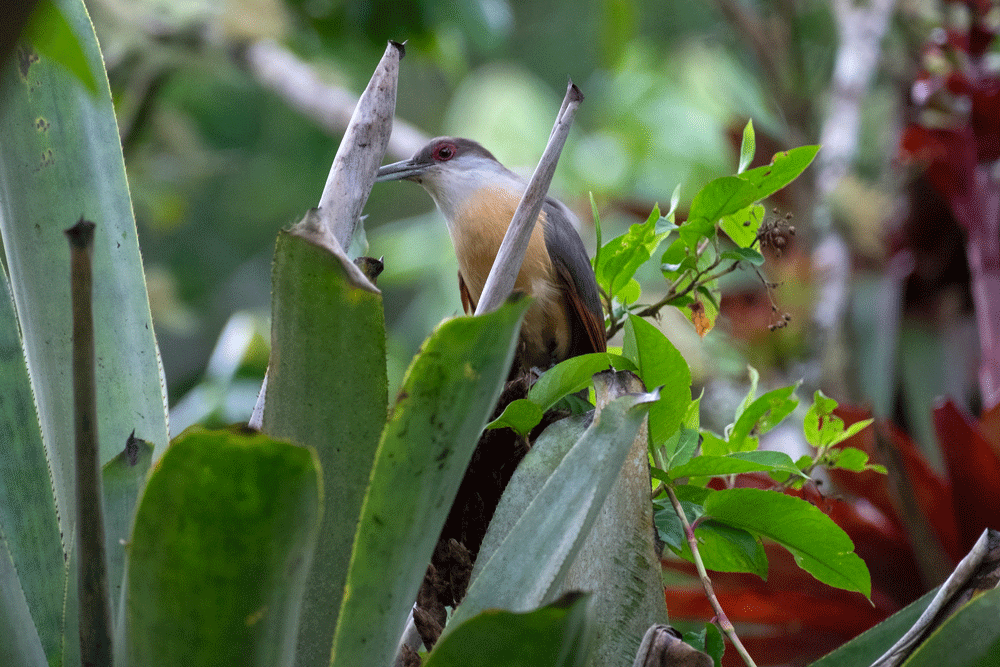
As we promised Otis, we returned to James Dennis’ Coffee House to buy some coffee and take a less time crunched tour. We walked around the rather informal but extremely scenic coffee plantation, and roasted some beans on a fire of old coffee bush wood.
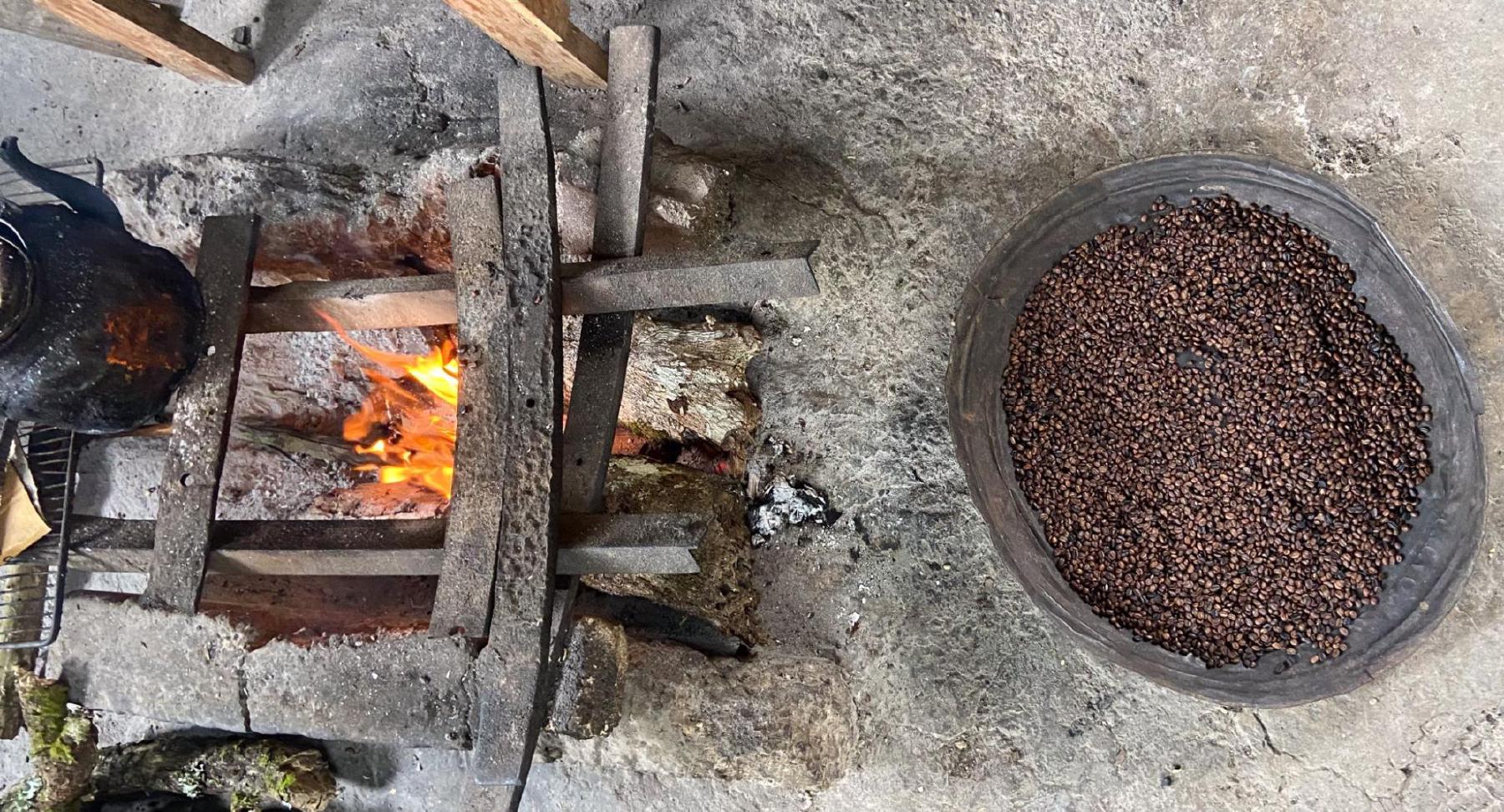
We stopped for a late lunch at EITS cafe, along the highway just before our turn off. The food (stew peas, eggs “benedict” with ackee sauce, fritters) was good, and the hummingbird feeder offered lovely up close views of Red-billed streamertails (“doctor birds” locally).

I decided not to drive down the whole road again, and parked near the highway in a lot recommended by Rafjam. As I parked, Alison noticed the back driver side tire was flat. I left it for the evening, and assumed it would be easy to swap for the spare the next day. (foreshadowing)
Soundtrack:
Places:
Holywell Park, hiking/birding, ★★★
EITS Cafe, food, ★★★★
Day 7
With no car immediately available, we spent the morning hiking from Rafjam up into Middleton, the community uphill to the east. It’s a pleasant morning. The town is set just at the point where the forest becomes truly montane, and the highest elevation places (where we finally, improbably see a Jamaican Blackbird foraging in the canopy) are covered in epiphytes, as well as a couple vocal endemic Chestnut-bellied Cuckoos and an also vocal Jamaican Pewee.


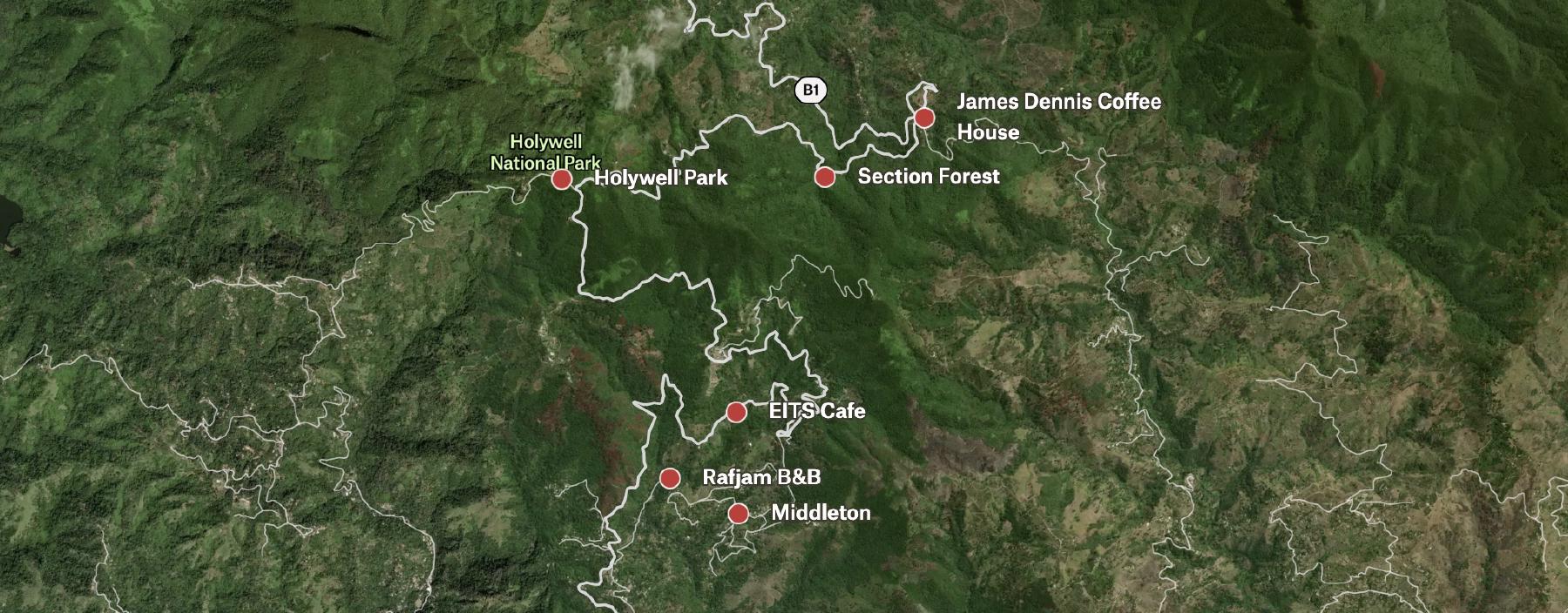
We had a surprise in store when we hiked back to our parked car and attempted to replace the flat tire. The hubcaps, of course, were ziptied on. Removing the zipties and exposing the lugnuts, we discovered that the lugwrench provided with the car is the wrong size.
Again and again in Jamaica, we encountered kind and helpful people. This was no exception. Within a couple minutes, Chen, the nearby resident we had met (and paid) last night, showed up, saw the issue, and ran away to find a lug wrench that fit.
20 minutes later, we were on our way to Kingston.
When I repaired the tire in Kingston later, I removed all of the hubcaps for a closer look. The rest of the tires had the same size nuts, thankfully, though one only had three out of four, with the fourth bolt sheared off. Ah well, nonetheless.
That afternoon we visited the Trench Town Culture Yard, the museum of sorts about Bob Marley’s childhood in a “government yard.” While a bit pricey, it was a friendly, community focused place and I didn’t have second thoughts about supporting them. We took a guided walk around the neighborhood as well, which was the highlight for me – encountering some of the settings in the book that I had been reading, A Brief History of Seven Killings. Everyone was friendly and it was a great welcome to Kingston.
The National Gallery of Jamaica, a free museum with artwork from Taíno times to the present day, is also worth a stop. Alison and I were both especially taken with John Dunkley’s paintings.
While downtown Kingston was a ghost town on a Sunday afternoon, the waterfront was happening, and we walked around for a bit, appreciating the Royal Terns, and urban Cattle Egrets.
Dinner was a quick and delicious stop at Devon House Bakery for patties. Highly recommended, as well as the ice cream – just be prepared.
Later at night we went to Kingston Dub Club for their regular Sunday night session, Grounation Day edition. Dub Club is way up in the hills, about a 25 minutes drive from Half Way Tree. It was a little empty feeling, but the vibe was still nice, with relaxed reggae music, rastafari booksellers, and great views over the Liguanea plain. We saw almost everyone we had met this afternoon in Kingston here – from two people we saw walking around with distinctive haircuts, to Stoneman, to the Scottish tourists we talked to at the National Gallery.
Places:
Rafjam, hiking/birding, ★★★
Trench Town Culture Yard, ★★★★
National Gallery of Jamaica, art museum, ★★★
Devon House Bakery, food, ★★★★
Kingston Dub Club, music/nightclub, ★★★★
Day 8-11
Alison flew back to Amsterdam, and I spent the next week with the Media Institute of the Caribbean’s Investigative Journalism workshop, where I shared some training material on online open-source investigation with journalists from around the Caribbean.
I also had the opportunity to explore Kingston a bit more. I can’t overstate how fun it is to listen to the music people are listening to here. One evening at TriniYaad, an excellent Trinidadian food stand, I heard someone singing along to a song playing on the PA. Neither myself nor Shazam could identify the neo-soul-esque reggae number, so I asked her who the artist was. “Oh!” she said, “it’s me.”
From taxicabs to school buses to journalist outings, the common denominator of music was Afrobeats and Soca. I didn’t make it to any Dancehall parties unfortunately but Dancehall Ketch Up is the place for info.
Places:
TriniYaad, restaurant, ★★★★
Soundtrack:
Day 12
I went over to Hope Botanical Gardens after work and had a great evening birding and botanizing.
While following a Jamaican Woodpecker around with my binoculars, something caught my eye. Wait a minute, that’s not a branch! That’s a Northern Potoo!
Places:
Hope Gardens, birding/hanging out, ★★★★★
Day 13
After the workshop, I went for a birding trip with Dwayne Swaby, arranged by Ricardo Miller of Arrowhead Birding, with the goal of visiting some habitats I haven’t had much of an opportunity to see yet: wetlands and the dry limestone hills to the west of Kingston. Like pretty much everything in Jamaica, this tour was expensive, but with Alison gone I was less thrilled about exploring Kingston’s suburban sewage ponds solo.
Dwayne was a great guide, and picked me up at 4 AM sharp to drive frantically into the mountains to find Jamaican Owl.
The Hellshire Hills would have been worth going to even if we didn’t find any birds, as it was a completely different landscape from the lowland and montane rainforests Alison and I previously explored.
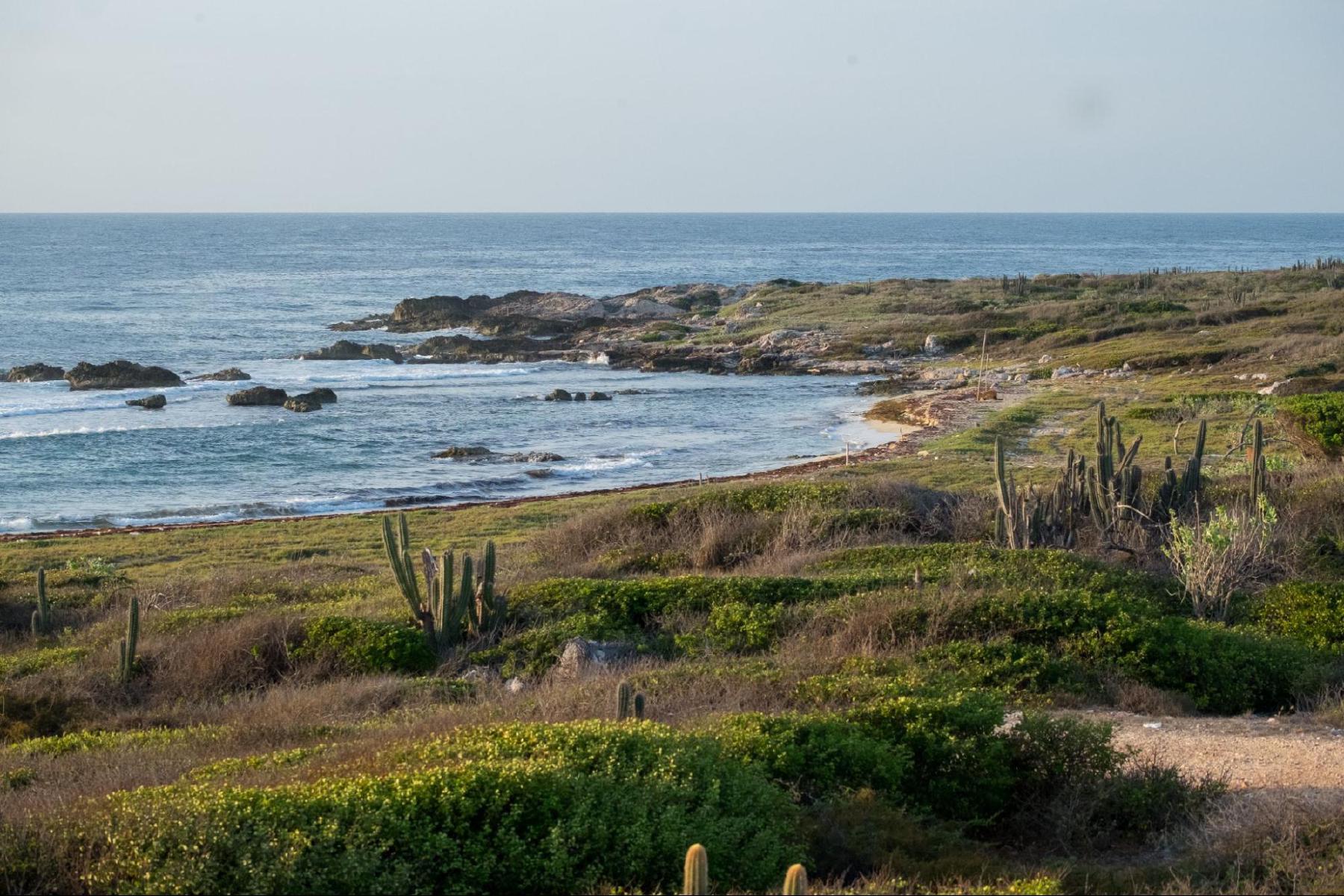
But of course we saw birds, including Merlin, Bahama Mockingbird (larger and scruffier looking than the Northern Mockingbird, and only found in these dry hills), introduced Saffron Finches (native to South America), the rather hard to separate Stolid Flycatcher and Sad Flycatcher, the first duck of the whole trip, a Blue-winged teal, and a great view of a Jamaican Oriole feeding on cactus blossoms in a very Arizona way.
Next we visited some small chicken farm ponds where a couple Masked Ducks can usually be found. We saw 12, a high count for Dwayne at this location!
Finally, we ended with a stop at Juici Patties and a walk around Hope Gardens, where Dwayne showed me another 5 (!) Northern Potoos that I had missed the previous evening.

That afternoon, I visited the Jamaica Institute, after discovering the lovely Jamaica Journal at the National Gallery gift shop a few days previously. They seem confused that someone was visiting their small museum, and unfortunately there wasn’t much to see.
A visit to Rockers International, the last surviving record store from the golden days of Kingston’s music industry, proved phenomenal. While their records are poorly organized, poorly stored, and overpriced, I enjoyed myself crate digging for a couple hours. And I kind of had to, because soon after I started perusing the tiny store, the laptop DJing by the store owner turned into a set of old school beats on 45s with street passersby stopping in to sing and freestyle, completely blocking me in. A really lovely afternoon.
For transport around Kingston, I mostly drove or took Uber, which works okay. This evening — a Friday around rush hour at the end of the month — was the only time I had trouble getting an Uber. Something to be aware of if you’re using the app around Kingston.
Soundtrack:
Places:
Arrowhead Birding Tours, tour operator, ★★★★
Hellshire Hills, birding, ★★★★
Jamaica Institute, museum, ★★
Rockers International, record store, ★★★★★
Day 14
I start heading back towards Montego Bay after a quick morning stop at the Bob Marley House museum. It’s alright, again made more interesting by reading A Brief History of Seven Killings at the same time. (Always worth it to read a book set in the place you’re visiting as you’re visiting it.) The museum was a nice way to spend a morning, but the places in Kingston that Alison and I visited on our arrival day felt more essential.
I had a couple days before the weekly TUI flight to Amsterdam, and decided to do something up in Cockpit Country, a remote part of Jamaica in the northwest (and back closer to the Montego Bay airport.) My drive takes me back to Falmouth, again at the shores of the Luminous Lagoon.
Falmouth is a typically chaotic Jamaican city, but by the western side I discover a couple relaxed places. The Jobson Bay Eco Beach is scenic and undeveloped – and deserted, which might have unsettled me if not for the posters talking about climate change projections and the essential role of mangrove forests.
Eventually, I followed the sound of booming dancehall and ended up at a bar down the street. More than most places I’ve been, when there is music playing in Jamaica, there is someone deliberately thinking about what to play and people are listening. This bar/jerk chicken joint is no exception, and I sat around and listened to the dancehall vibes for an hour or so along with a half dozen other folks nursing Red Stripes and eating chicken.
At night, I took my hiking pole and tried to stir up the lagoon waters. No luck, no light.
Places:
Bob Marley House, museum, ★★★
Jobson Bay Eco Beach, beach, ★★★★
Fisherman’s Inn, ★★★
Unnamed bar with jerk chicken by Jobson Bay, ★★★★
Day 15
Cockpit Country has a really interesting limestone geology, which has created a landscape of steep hillocks, with small valley lowlands in between. The porous land is prone to collapse and also means there’s no surface water, but the valleys can be fertile places to farm and the rugged, treacherous landscape allowed escaped slaves to successfully defend themselves in the First Maroon Wars.

These fertile valleys also contain plentiful bauxite and mining in the area is a major threat to its unique ecosystem. Hugh at Cockpit Country Adventures, who organized the hike, told me about his involvement in advocacy for land protection in the area. While a protected area now exists, many sensitive habitats and important wildlife corridors are still at risk.
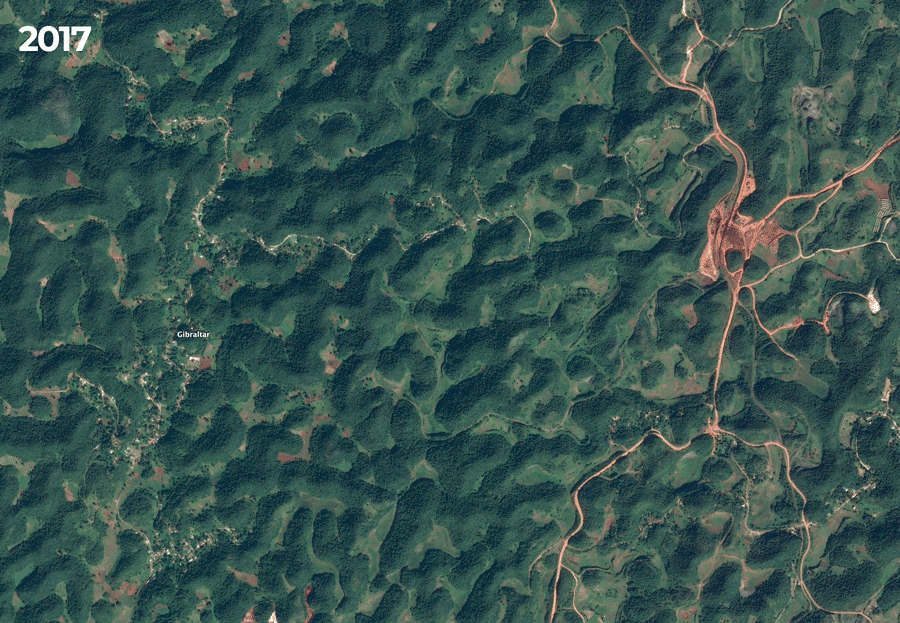
We hiked along the B10 road from Kinloss to Spring Garden. While this is named as a minor highway, I’m not sure it’s drivable anymore, and not only did we see no cars, we saw no other people. The road felt very remote, and traversed diverse terrain from cockpit valley bottoms to dry limestone outcroppings. The highlight of the hike was a Jamaican boa lounging by the side of the road, spotted by Ainsworth, my guide.
Some other stuff we saw




After the hike I went for a short walk on the Eco Beach and ended up nearby at Pablo’s Ganja Bar, which is known for… its seafood. However, when I arrived and met Pablo, I was informed that he had been at the farm earlier that morning and thought, “today I’m just going to eat stuff from the farm.” So no fish.
Still, I had an excellent fish soup (this didn’t count) and breakfast-style callaloo with hard food. Folks were friendly, and one of the four other patrons DJed a killer set of old-school American crooning R&B.
Places:
Cockpit Country Adventures, tour operator, ★★★★★
Kinloss to Albert Town, hike, ★★★★
Pablo’s Ganja Bar, food, ★★★★
Day 16
The gate of the hotel was locked when I woke up. Unable to drive anywhere, I hopped the fence and started walking. There’s a roadblock closing off a section of road that heads through a mangrove swamp towards Falmouth, and I thought it might have some decent birding, with a few ponds scattered in the forest towards the midway point. It’s fairly remote, but never felt unsafe, and made for a nice morning walk, with Antillean Nighthawk, Vervain Hummingbird, Spotted Sandpiper, Yellow-faced Grassquit and Common Gallinule.

Back at the hotel, as I ate breakfast (sugary cereal and milk only, the owner is from Canada?), he stopped by to tell me he noticed my tire was low… sure enough, another flat on the front driver side.
Sigh. I put on the spare and limped back to Montego Bay.
